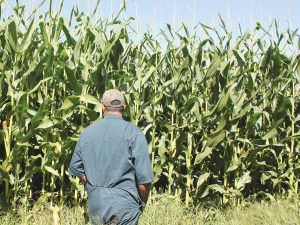Hitting heifer liveweight targets
Early December marks a key transition for many dairy farmers, as weaned replacement heifers head off-farm to grazing.
 Central and Northern North Island have produced excellent crops with farmers expecting yields in the high 20 tonnes/ha.
Central and Northern North Island have produced excellent crops with farmers expecting yields in the high 20 tonnes/ha.
With farmers having a bumper maize silage season this year, how it is harvested and managed will be crucial to preserving its quality and unlocking its nutritional value.
Cyclone Gabrielle and atrocious weather decimate a lot of last year's maize crops.
Fast forward 12 months and the central and northern North Island have produced excellent crops with farmers expecting yields in the high 20 tonnes per hectare, according to Pioneer farm systems manager Wade Bell who recently presented to the SealesWinslow team. Canterbury and the Central Plateau are also producing record yields.
SealesWinslow nutrition and quality manager Paul Drew says as harvesting gets underway, many factors can influence maize silage quality from the chop length to kernel integrity and how you manage your stack.
"Harvest time, longer chop lengths and cracked kernels enhance the availability of nutrients, while proper stack management, including drainage and covering prevents, spoiage and mould growth," says Paul.
"Farmers should consider their maize silage harvest timing carefully. Maize silage should be harvested when whole plant dry matter is approximately 35%. An indicator of this is where the milk line is two-thirds of the way down the kernel. To confirm this, a sample should be tested, using a suitable method or in a laboratory. Harvesting at the right time ensures a better silage yield, maximising starch content and promotes good fermentation through the ensiling process."
Farmers should aim for a chop length of arond 15-20mm for the best packing density in the stack and fermentation. Using well-maintained forage harvesters with sharp blades will also achieve a clean cut and minimise kernel damage.
Proper compaction in the silage stack is also crucial for removing oxygen and promoting good anaerobic fermentation.
"It's all about doing the basics well," says Paul. "Use heavy packing equipment and compact layers to achieve a dense stack. Stacks should also be well sealed to create an airtight seal and prevent spoilage."
Primary sector leaders have welcomed the announcement of a Free Trade Agreement between India and New Zealand.
At Pāmu’s Kepler Farm in Manapouri, mating has wrapped up at the across-breed Beef Progeny Test.
More than 150 people turned up at Parliament recently to celebrate the 20th anniversary of Horticulture New Zealand (HortNZ).
Biosecurity New Zealand says Kiwis should continue to keep an eye out for yellow-legged hornets (Vespa velutina) over the holiday season.
The Push-Up Challenge, an event which combines mental health and fitness, is set to launch in New Zealand in 2026.
Fonterra has slashed another 50c off its milk price forecast as global milk flows shows no sign of easing.